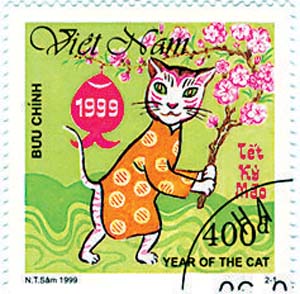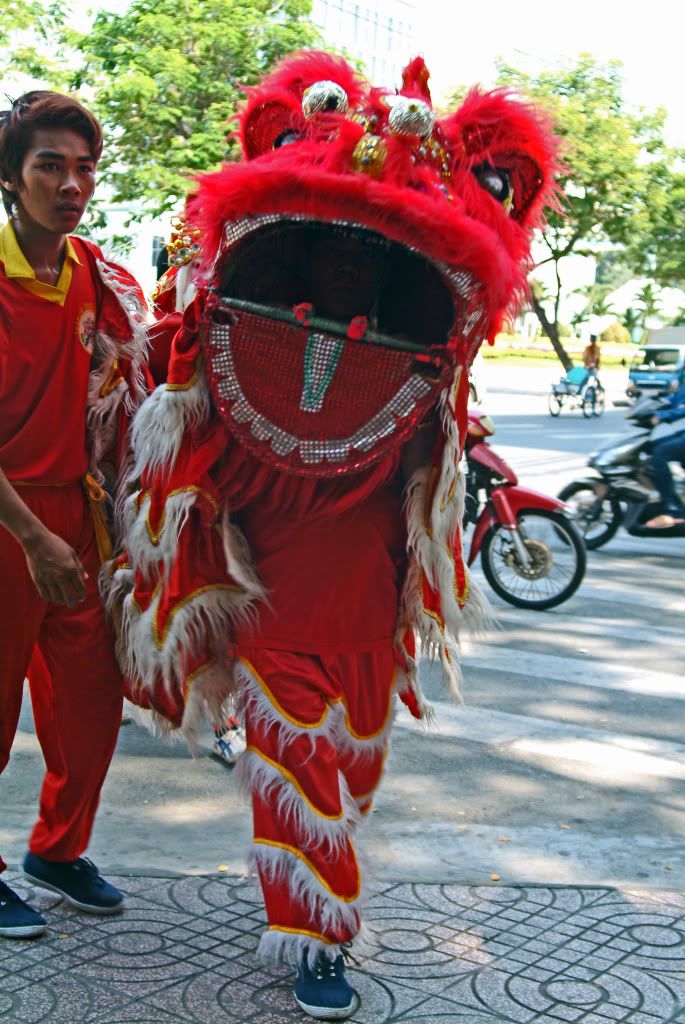For the Vietnamese, Tết is in one week the western Christmas, Easter, Summer Holidays, and the Birthday of everyone in the house. For Vietnamese people not celebrating the Birthday is perfectly OK; everyone is one year older in Tết and that’s when greetings for new age happen, apart from the “happy new year ” (chúc mừng năm mới).
Tet is so full of traditions, and legends that whole books are written about them. Vietnam is a country under the triple religion (tam giáo): the perfect syncretism of Mahayana Buddhism, Confucianism and Taoism. Actually, Vietnamese people would often say that they are atheist and non religious, but will probably have a mixed altar with themes from the three religions.
These are some of the traditions and stories that are said: On the 23rd of the twelfth month, the Kitchen Gods will leave to heaven and report to the Jade Emperor, ruler of heaven, about the deeds of the family they protect. According to their acts in the past year, the family will get granted good luck or bad luck next year. People prepare the trip of their kitchen gods making the houses new: Two months before tet, everyone cleans, paints, refurbishes, and do all kind of reforms to the houses. They have to be ready before the New Year.
They also decorate it with flowered plants, yellow flowers in Saigon, from the Hoa Mai

And they buy, eat, and present sweet fresh fruit. Melon and Watermelon is the food during tet, and the main decoration too.

Celebrating tet, in Vietnamese is said: ăn Tết, that can be translated as “Eat Tet”.

The cities become empty. Almost everyone goes back to their villages, to be with their family and ancestors, and few return. It is usually a problem in the factories the fact that workers often don’t come back (in Tet many people change works).
Saigon, a city of more than eight million people, and more than five million scooters, is absolutely deserted that week, like the Vanilla Sky movie opening. I can walk with my dog in the middle of the road carelessly. It is almost scary; like a postapocaliptic movie. Restaurants, shops, all is closed, and actually it is advisable to store water and food in the house for that week.
Vietnamese people are very, very close to their agricultural roots. Few of them have lived in the cities more than one generation and, especially during these festivities, richness is seen in food: A house plenty of rice, and fruits, is a rich house. The dishes during tet are particularly complicated and time consuming. The main food: Bánh chưng, is sticky rice than can take days to prepare (it has to be cooked in a huge pot on top of live fire for days, so that people take turns caring the fire, and adding water all day and all night). It is finnally tightly wrapped in leaves, which is also easier said than done.

Around Tet, all is about luck. The day of tet, Tân Niên , children are given “lucky money”. (small change in a red envelope), and although cleaning is frenzy before that day, during Tân Niên, sweeping and cleaning is very xui (unlucky), because it takes out the luck dust from the heavens…
Some pay to have a dragon into the house with the dragon dance. Dragons in Vietnam are the givers of richness, as the rivers are the spirit of dragons, and rivers give rice and richness. Also, Vietnamese people call themselves “children of the dragon”. The legend of the origins of Vietnam is that the King of Dragons, Lạc Long Quân, married a fairy of the sea and together they had 100 eggs. When they hatched, 50 of them were dragons who went up the mountains and became the rivers of Vietnam, and 50 were humans, who became the Vietnamese people)

One of the most important and stressful moments is the ceremony of xông nhà, or the act of the first person entering the house on New Year. It is not a small thing. If the person entering the house has been unlucky, impure, aggressive, not beautiful, etc, etc, then the year will be full of calamities. Nobody. Absolutely nobody enters into other people’s house that day without being very formally invited.
That day is also dedicated to the family (the grandparents).

The second day is dedicated to friends, and the third day is dedicated to honor the teachers.
The city takes about one month to recover their usual rhythm, usually with a reshuffle of its population.
The incoming year this time, has also a particularly Vietnamese flavor, because although in China and in the Chinese Calendar the next year is the year of the Rabbit, in Vietnam the one coming is the year of the cat.

The fairy story behind the twelve animals of the Chinese zodiac is related to a race between the animals to see Buddah. The long story short, in the original story, the rat tricked the cat pushing him off the back of the ox and into the river. Because of that, the cat lost its position in the calendar and they hate mice and rats since.
But in the Vietnamese calendar, the cat takes the place of the rabbit, like if the story had never happened. It is unclear why. I asked some old Vietnamese fellows, and they answered “Oh, yes. The rat pushed the cat off the ox. But the Vietnamese cat is Vietnamese. It didn’t give up and made it to the river shore, so Buddha gave him the year. “ Quite a proud statement!
Actually, it is probably related that the symbol for rabbit is pronounced “mẹo”, and mèo in Vietnamese, is cat.
The year of the cat is a lucky year where work is not the main concern (like the year of the ox). Instead it is about perfectionism and gentleness. People will try to improve their careers, redecorate their houses and offices, and take care of themselves. These are usually self-fulfilled prophecies, as people act like the year predicts (saving money in the year of the rat, working more in the year of the ox, spending more money on the year of the pig…)
Anyway, and surrounded by the celebrations, Chúc Mừng Năm Mới!



